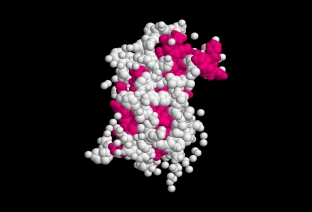Disruption of the growth process, when a person remains abnormally short, is an endocrine pathology in which the synthesis of somatotropin – growth hormone. Due to such a violation, the growth of the skeleton and internal organs is delayed, and physical underdevelopment of the body occurs. Pituitary nanism, characterized by abnormalities in the production of growth hormone, manifests itself externally, primarily in the lagging behind of a person in growth – men grow on average no higher than 130 cm, and women – not higher than 120 cm. Therapy of the disease is prescribed depending on the causes & nbsp; its development, from the symptoms with which it manifests itself.
Why is the production of growth hormone disrupted
Pathological conditions in which the production of growth hormone is disrupted and short stature develops are sometimes called differently – dwarfism, microsomia, nanosomia. Lagging behind in physical development compared to peers can be either an independent genetically determined disease or a symptom of a number of diseases.
Pituitary dwarfism can be caused both by congenital mutations in the growth hormone gene or the gene responsible for tissue resistance to somatotropin, and by external causes, among which it is especially important to remember the following:
- tumors of the pituitary region, other areas of the brain,
- craniocerebral and birth injuries, consequences of brain surgery,
- neuroinfections (encephalitis, meningitis),
- toxic effects of chemotherapy.
In pituitary dwarfism, a decrease in growth hormone production may be accompanied by a decrease in the synthesis of some other pituitary hormones, which disrupts the work of the adrenal glands, gonads, and thyroid gland.
These disorders also affect the physical development of a person.
What are the signs of impaired production of growth hormone
Pituitary dwarfism may be accompanied by proportional and disproportionate development of the body. Typically, children with a congenital pathology of the production of growth hormone are born with normal weight and height, and a delay in physical development begins to manifest itself by the age of two or three, increasing over time. Usually patients maintain a harmonious physique, although sometimes they may retain childish proportions.
HGH-deficient patients have a pale, dry, wrinkled skin, sometimes with a marbled or yellowish tint. Hair is thin and brittle. Facial features are small due to the underdevelopment of bones, a retraction of the bridge of the nose is characteristic. Subcutaneous fat is unevenly distributed – both poor development of forms and excess fat deposits on the chest, abdomen and thighs are possible. The muscles are weakened, the change of teeth occurs untimely, the larynx is often underdeveloped and causes the childish timbre of the voice in an adult patient.
The intellectual development of patients with insufficient production of growth hormone does not suffer, although isolation, infantilism, and low self-esteem are often noted.
Patients with pituitary dwarfism often have delayed sexual development, suffer from bradycardia and arterial hypotension, hypothyroidism.

Methods of therapy for growth hormone deficiency
The basis of treatment for pituitary dwarfism is hormone replacement therapy. The course of treatment is intermittent – for 2-3 months, somatotropin preparations are prescribed, therapy is carried out until the growth zones are closed or until acceptable parameters of physical development are achieved. In parallel, the use of anabolic steroids is recommended to stimulate the level of endogenous somatotropin and protein synthesis.
After the closure of the growth zones, patients are transferred to a permanent intake of sex hormones. If there are problems with the thyroid gland or adrenal glands, additional preparations of L-thyroxine, glucocorticoids are prescribed.







Add a comment